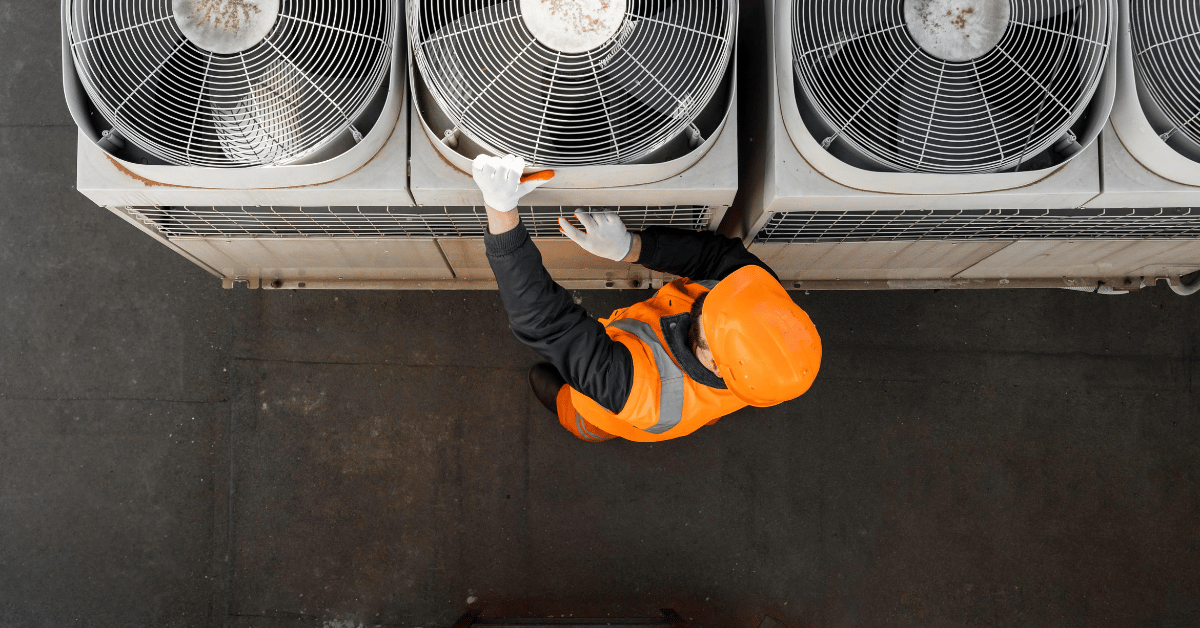How to Recover a Charge in HVAC? — Expert Tips & Techniques
A charge in HVAC indicates the amount of refrigerant left in the system.
Refrigerants are important for HVAC system operations. They help cool or heat an area by absorbing or releasing heat. Recovering a charge or refrigerant recovery is mainly a process of moving the refrigerants from a system to usually a container for maintenance, repair, or decommission.
Knowing how to recover a charge in HVAC is essential for the best HVAC service — here’s why:
Why Recovering a Charge is Essential?
A proper recovery technique can ensure that this harmful substance is not released into the atmosphere. Usually, this critical task of refrigerant or charge recovery is done by HVAC professionals or technicians.
1. To Protect the Environment
Some substances have a high global warming potential and can deplete the ozone layer. In HVAC, such charges or refrigerants are found in the form of R-22, R-410A, etc. If you release them into the atmosphere, they will harm the environment and contribute to global warming. That’s why recovering a charge is mandatory to protect the environment.
2. To Repair the System
Sometimes, the system requires maintenance and repair to get the best HVAC service from your air conditioning unit. If you do not recover a charge before the repair, the charges will be lost and may harm the environment. Also, if you recover the charges, you can effectively reuse them in your system.
3. To Comply with Legal Regulations
Charge recovery is essential because of the Environmental Protection Agency’s regulation. Section 608 suggests that keeping the air clean and releasing any refrigerant in the air is considered illegal.
4. To Maintain Efficiency
If the HVAC system has an inadequate level of refrigerants, it will lead to inefficiency. Moreover, the heating and cooling capacity of the system will be reduced. Your energy bills will be high, and you will not get the best HVAC service.
5. To Ensure Safety
If you do not handle the refrigerants properly, it may cause safety issues. As the charges or refrigerants can be toxic or flammable, it is dangerous for us. So, recovery of the charges is needed to ensure the safety of the users and HVAC technicians.
6. To Reuse or Recycle
Refrigerants are quite expensive, and some of them are scarce, like R-22. So, if you recover the refrigerants from your old or replaceable HVAC system, it can be reused or recycled for further use. This process can save the expense of getting new refrigerants.
Tools Required for Efficient Recovery of a Charge
HVAC professionals use certain tools to recover the refrigerants or charges. Using the right tool is essential to make the recovery process efficient. Here are the tools required for recovery.
| Tools for Recovery | Brief Description |
| Recovery Machine | Different Refrigerants need different types of machines to recover them. However, the initial instrument to recover a charge is a recovery machine. It removes the refrigerants from the system and puts them in a recovery cylinder. Remember, you have to choose a recovery machine that suits or fits with the refrigerant’s pressure requirements. |
| Recovery Cylinder | The Recovery Cylinder usually stores the refrigerants. Do not overfill the cylinder; try to keep it filled below 80% of its capacity. |
| Manifold Gauge Set | The Manifold Gauge set is used to read the pressure within the HVAC system and recovery cylinder. |
| Refrigerant Scale | This scale measures the weight of the refrigerants. It is used to weigh the cylinder before starting the recovery and again after recovery. The Refrigerant Scale helps prevent overfilling. |
| Valve Core Removal Tools | These tools ensure the free flow of the refrigerants. It makes the removal process faster and more efficient. |
The best HVAC servicing companies will use the right combination of these tools to collect and store the charges properly and safely. To reduce refrigerant loss or damage, it is important to ensure the correct use of these tools.
Recovering a Charge in HVAC
There is a proper technique that experts follow to recover the charges in the HVAC system. It ensures safety and protects the environment. Here’s how to recover a charge in HVAC systems.
Preparing and Inspecting
Firstly, take a Recovery Machine and Recovery Cylinder suitable for the refrigerants. Check whether they are working well. Then, evacuate the cylinder to a deep vacuum, ensuring there is no moisture. Vacuuming it under 500 microns is suggested.
Then, switch off the HVAC system and connect the recovery machine and other parts to it. Measure the cylinder’s weight before starting the process.
Cleaning the Hoses
In this step, clean the hoses so that there remains no air or gas inside. To purge it well, try loosening the connection with the recovery tank a bit. Do not skip this step. Experts suggest using standard ¼ inch hoses for this step. Later, you can upgrade to a larger-diameter one.
Extracting the Liquid Refrigerant
Recovering liquid refrigerant is faster and more efficient. Let the liquid refrigerant flow into the recovery machine by opening the high-side valve on the manifold gauge. Check the recovery machine to ensure the recovery of most of the liquid refrigerant.
Recovering Vapor Refrigerant
To initiate vapor recovery, open the low-side valve of the manifold gauge. The remaining vapor refrigerants will then be extracted from the system. Vapor refrigerant takes a comparatively longer time to recover than liquid refrigerant.
Use larger-diameter hoses to increase efficiency and reduce the time it takes. The best HVAC service experts suggest using larger hoses to increase the flow.
Monitoring the Pressure Level
Continuously monitor the pressure level. When the system is in a near-vacuum state, it is a sign that the recovery process has been completed. You can check the pressure level by the manifold gauge’s reading, which is close to zero.
If you are using a modern recovery machine, it will automatically shut down when the process is complete.
Cleaning and Weighting
When the charge recovery process is complete, clean the recovery machine to prevent future contamination. Lastly, weigh the recovery cylinder again. This will indicate the amount of refrigerant recovered and ensure that the cylinder is not overfilled.
Exclusive Expert Tips and Tricks
Experts like Texas’s The Chill Brothers suggest some tricks to help you recover a charge in HVAC.
- Place your recovery cylinder in an ice bucket to pre-cool it. This will help lower the internal pressure and speed up the process.
- You can prepare two recovery cylinders. It will help you when the tank heats up.
- Cool the refrigerants before entering the tank by using a heat exchanger or ice bucket between the recovery machine and the recovery cylinder.
- Vacuum pump oil is used to seal the hoses better.
- It is an intelligent way to position the recovery machine and cylinder below the condenser or evaporator. It uses gravity and speeds up the recovery process.
- Install an inline moisture indicator to detect moisture in the refrigerant.
- Upgrade ¼ inch hoses to a larger-diameter one for higher flow during vapor recovery.
Avoid the Common Mistakes
One of the most common mistakes is not weighing the recovery cylinder. Avoiding overfilling the cylinder can be hazardous. Always keep it less than 80% filled.
Moreover, many HVAC professionals overlook the purging process. It is a big mistake as purging is necessary to avoid contamination and mixing of refrigerants.
Post-recovery handling of the refrigerants is a must. Follow the instructions and standards of AHRI to handle or reuse the refrigerants. Proper labeling and storing can ensure future use of the charges.
Keep an eye for more news & updates on Sort!






